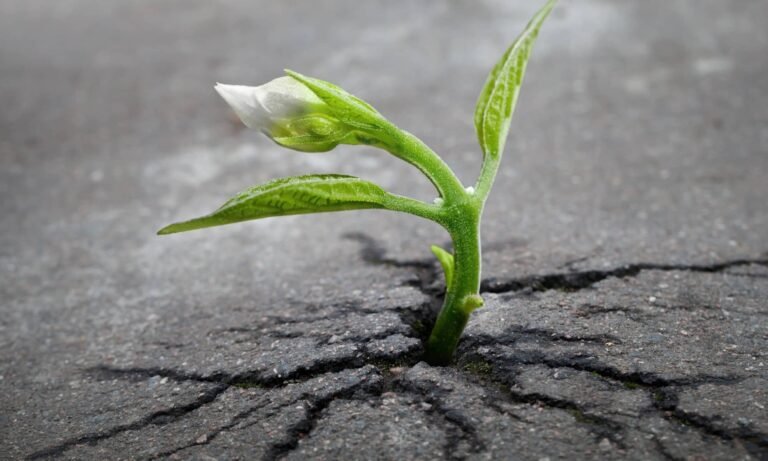Glades are unique ecological features found within forested landscapes, characterized by their open areas that are devoid of the dense tree cover typically associated with wooded regions. These sunlight-drenched clearings can vary significantly in size, ranging from small patches to expansive areas that provide a reprieve from the surrounding forest. The formation of glades is a result of various natural processes, including disturbances such as fire, wind, or human activity, which allow sunlight to reach the ground and support diverse plant and animal life.
Unlike other types of forested areas, which may present dense canopies that limit light penetration, glades foster a unique microclimate, leading to distinct ecological outcomes and fascinating biodiversity. The lack of towering trees facilitates the growth of various herbaceous plants, shrubs, and grasses, which can thrive in the abundant sunlight and often support a rich tapestry of biodiversity. This distinctive setup attracts a variety of species, including crucial pollinators, colorful birds, and resourceful small mammals, which depend on such habitats for nourishment, shelter, and survival.
In many instances, glades serve as critical transitions between different ecosystems, acting as crucial zones for species movement and interaction. They contribute to the overall health of forest ecosystems by providing spaces for many species to flourish and offering shelter and food resources that may be scarce in denser wooded areas. Understanding glades and their important role within larger ecosystems is vital for conservation efforts, as preserving these open spaces ensures the continuity of diverse biological communities that rely on them. The allure of glades lies not only in their biodiversity but also in their ability to showcase nature’s resilience and beauty amidst the intricacies of forest life.
The Types of Glades
Glades are unique ecological zones characterized by open spaces within forests that exhibit distinct types of vegetation and soil conditions. Among these, wet glades, dry glades, and meadow glades are prominent categories, each supporting a diverse array of flora and fauna that have adapted to their specific environments. Understanding these different types can enhance our appreciation for the ecological diversity within glades.
- Wet glades, as the name implies, are characterized by high moisture levels and often feature a variety of water-loving plants. These regions usually support unique ecosystems, home to species such as sedges, rushes, and various wildflowers that flourish in saturated soil. The increased moisture creates a fertile habitat for many insects and amphibians, forming a critical habitat for numerous organisms. Wet glades play a vital role in water regulation and provide essential resources for wildlife, particularly during dry seasons.
- In contrast, dry glades exhibit low moisture content and are typically found in well-drained areas. They are characterized by a diverse assortment of drought-tolerant plant species. In these environments, flora such as grasses and wildflowers thrive, alongside smaller shrubs and trees. The soil in dry glades is often sandy or gravelly, which influences the types of organisms that can survive there. Wildlife in these areas may include various insects, lizards, and small mammals that have adapted to the harsher, arid conditions.
- Meadow glades represent another fascinating type, positioned between wet and dry glades. These open grasslands support a mosaic of wildflowers and grasses, creating vibrant habitats that attract numerous pollinators such as bees and butterflies. The soil is generally well-drained yet retains some moisture, allowing for a rich tapestry of life. Meadow glades often serve as important breeding grounds for various bird species and provide forage for larger mammals.
The Ecological Importance
Glades are unique ecosystems that play a crucial role in maintaining the ecological balance of their surroundings. These open areas, often characterized by their sparse tree cover and abundant herbaceous plant life, serve as vital habitats that contribute to biodiversity conservation. The flora and fauna that inhabit glades represent a rich tapestry of species, many of which are rare or endangered. The diverse vegetation found within glades provides essential resources such as food and shelter, creating crucial nesting sites for various wildlife, including birds, insects, and small mammals.
Beyond their contribution to biodiversity, glades also play an integral role in soil health. The plant species found in these areas help in preventing soil erosion, enhancing soil structure, and improving nutrient cycling. The roots of herbaceous plants penetrate the soil, reducing compaction and increasing the infiltration of water, which prevents runoff and contributes to aquifer recharge. Healthy soil is foundational not only for supporting flora and fauna but also for sustaining agricultural practices surrounding these ecosystems.
Water regulation is another vital ecological function of glades. The open structure of these areas allows for better water absorption and filtration, mitigating the impacts of flooding and maintaining groundwater levels. Furthermore, glades act as corridors that facilitate wildlife movement and migration, linking fragmented habitats. This connectivity is increasingly important in the context of climate change, as it enables species to adapt to shifting environmental conditions and ensures genetic diversity is maintained across populations.
Flora and Fauna in Glades
Glades, often characterized by their open clearings within dense forests, are remarkable ecosystems that host a rich array of biodiversity. The flora in these areas is typically composed of a unique mixture of herbaceous plants, shrubs, and occasionally, scattered trees. Prominent species that thrive in glades include various wildflowers such as the delicate Phlox and the vibrant Coreopsis, which not only adorn these landscapes but also attract a multitude of pollinators.
Pollination is a crucial process within glades, as it sustains the growth of many flowering plants. Bees, butterflies, and other pollinating insects are drawn to the abundance of nectar and pollen offered by the diverse plant species. This interaction plays a vital role in maintaining the ecological balance, as healthy plant populations contribute to the food web and provide shelter for various wildlife.
The fauna inhabiting glades is equally diverse, encompassing both common and rare species. Many birds, such as the Northern Bobwhite and the Eastern Towhee, rely on glades for nesting and foraging. Small mammals like the Eastern Cottontail and various species of rodents find refuge and sustenance amid the grasses and shrubs. Notably, glades also serve as habitats for endangered species, providing them with essential resources that may be scarce in more developed areas. Conserving these natural sanctuaries is essential for protecting such vulnerable creatures.
Ecosystem interactions within glades create a dynamic web of life. Predators and prey coexist, influencing population dynamics and contributing to the overall health of the environment. As these habitats continue to be studied, scientists gain valuable insights into how glades function as vital ecological networks. The preservation of glades is not only imperative for the wildlife that inhabits them but also for maintaining biodiversity within the larger landscape. Through awareness and conservation efforts, we can appreciate and protect these enchanting natural sanctuaries for future generations.
Glades and Human Interaction
Throughout history, glades have served as pivotal areas for human interaction with nature, providing essential resources and recreational opportunities. These open spaces amidst dense woodlands have not only offered shelter and sustenance but have also become integral in shaping cultural and social practices. The use of glades for agriculture dates back centuries, with communities utilizing their natural beauty and fertile land for farming crops that sustain local populations. The interplay between human agriculture and glades illustrates a longstanding reliance on these ecosystems for food and livelihood.
In addition to agricultural use, glades have emerged as important recreational sites. Their serene landscapes attract individuals seeking respite from urban environments, allowing for activities such as hiking, birdwatching, and photography. This connection enhances the public’s awareness and appreciation of these natural spaces, fostering a deeper understanding of the ecological significance of glades. As a result, recreational use has prompted conservation initiatives aimed at preserving these precious habitats for future generations.
However, the relationship between humans and glades is fraught with challenges. Urban development and climate change pose significant threats, leading to habitat fragmentation and loss of biodiversity within these ecosystems. As cities expand and population pressures increase, the preservation of glades becomes increasingly critical. Conservation organizations are actively working to safeguard these areas, implementing strategies that promote sustainable practices while balancing human needs. These efforts can help mitigate the adverse effects of human activities, ensuring that glades continue to thrive as vital parts of our natural heritage.
Visiting and Experiencing Glades
Exploring glades offers a unique opportunity to connect with nature’s hidden sanctuaries. These tranquil spaces, often rich in biodiversity, are best experienced during specific seasons when the flora and fauna are at their most vibrant. Spring and fall are ideal times to visit glades, as the weather is generally mild, and the landscapes are alive with colorful blossoms and foliage. During these seasons, wildlife is often more active, providing ample opportunities for observation and photography.
Several renowned glade locations exist across varying geographical regions, each offering distinct experiences. For instance, the Great Smoky Mountains National Park in the United States features stunning glades surrounded by Appalachian forests. The peacefulness of these areas allows visitors to engage in activities such as hiking, where well-marked trails lead to breathtaking vistas. Another popular destination is the Everglades in Florida, a vast wetland teeming with unique wildlife, providing an exceptional backdrop for bird-watching enthusiasts and photographers alike.
When visiting glades, engaging in various activities enhances the experience. Bird-watching is particularly rewarding, as glades attract numerous bird species, especially during migration periods. Setting up a camera or binoculars in these serene environments can yield remarkable wildlife sightings. Additionally, photography enthusiasts can capture striking images of glade landscapes, gradually changing with the seasons. Taking leisurely walks or guided tours through these spaces also allows for a deeper appreciation of the rich ecosystems they harbor.
Travelers are encouraged to respect the natural environment by following Leave No Trace principles, ensuring that these enchanting glades remain pristine for future visitors. Through careful planning and respectful exploration, glades can provide calming retreats, fostering a lasting connection with the beauty of the natural world.
Challenges Facing Glades
Glades, characterized by their unique ecosystems, are increasingly under threat from a range of factors that jeopardize their existence. One of the primary challenges is habitat loss, often resulting from urbanization, agriculture, and industrial development. As humans encroach upon these natural areas, glades face fragmentation and degradation, leading to a decline in biodiversity. According to recent studies, approximately 40% of glade habitats have been permanently altered or destroyed in the past few decades, posing a significant threat to the flora and fauna that depend on these ecosystems.
In addition to habitat loss, the proliferation of invasive species represents another grave concern. These non-native plants and animals disrupt the balance of local ecosystems, often outcompeting native species for resources and altering ecological dynamics. For instance, the spread of invasive grasses can lead to increased fire risk, further exacerbating the vulnerability of glades. Research indicates that invasive species can account for up to 50% of the biomass in some glade environments, further emphasizing the need for efficient management and restoration strategies.
Moreover, climate change exacerbates these existing challenges, influencing temperature patterns, precipitation levels, and seasonal cycles in glade regions. Shifts in climate can lead to droughts or excessive rainfall, which may disrupt the delicate balance that sustains glade ecosystems. For example, a study published in a leading environmental journal noted that many glades are experiencing changes in species composition as a direct result of rising temperatures and altered rainfall patterns. This shift not only threatens the survival of native species but also undermines the overall resilience of glade habitats.
Given these pressing challenges, greater awareness and action are vital. Conservation efforts must be prioritized to protect these fragile ecosystems, ensuring that glades continue to serve as sanctuaries for diverse plant and animal life, while providing valuable ecosystem services. Comprehensive strategies to address habitat loss, control invasive species, and mitigate climate change impacts are essential in safeguarding the enchantment of glades for future generations.
Conservation Efforts for Glades
Conservation efforts for glades are vital in safeguarding these unique ecosystems, which serve as critical habitats for a diverse array of flora and fauna. One key strategy employed to protect glades is habitat restoration, a process aimed at reinstating original ecological conditions. This involves the removal of invasive species that threaten native plants and animals, along with the reintroduction of indigenous species, thereby promoting biodiversity.
Moreover, legal protections play a significant role in glade conservation. Many glades are designated as protected areas under state and federal laws, which helps restrict development and resource extraction activities that could degrade these delicate environments. The establishment of protected areas not only provides a safeguard against external pressures but also fosters research opportunities that further enhance understanding of glade ecosystems.
Community engagement initiatives are equally crucial. By fostering local stewardship, conservation organizations can raise awareness and encourage public participation in glade preservation efforts. Examples of successful programs include citizen science projects, where community members are trained to monitor wildlife and report changes in biodiversity. This grassroots involvement not only empowers individuals but also cultivates a sense of ownership and responsibility towards these natural sanctuaries.
Notable organizations dedicated to glade conservation, such as The Nature Conservancy and local land trusts, have spearheaded numerous successful projects. These initiatives demonstrate effective collaboration between stakeholders including scientists, land managers, and residents, ensuring a multi-faceted approach to conservation. By highlighting successful case studies, it becomes evident that concerted efforts in restoration, legal frameworks, and community involvement can significantly enhance the protection of glades, addressing the challenges they face and preserving their enchanting beauty for future generations.
“In the quiet heart of a glade, nature whispers secrets only the still mind can hear.”
– Copilot
What’s More

My Blog ( 110 )
Dependence (10) Fiction (9) Karma (9) Landmarks (10) Paramount (9) Spectrum (9) Spotlight (9) Take Off (9) Terra Shapes (9) Trepidation (9) Unique (9) Virtue (9)
Amazing Stuff (9) Beyond Known (9) Controversial (9) Digital World (10) Inequities (10) Innovative (9) Metaphysics (9) Orbiting Entities (10) Our Society (10) Outer Space (9) Value Creation (10) Yearnings (10)

My Interests ( 114 )
Site Forum
Curious to dive deeper and ready to share your thoughts on this? Join the conversation and be part of the FORUM@ericroth.org Your online discussion board providing space for engaging exchanges on specific topics and shared interests across this website.













